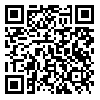BibTeX | RIS | EndNote | Medlars | ProCite | Reference Manager | RefWorks
Send citation to:
URL: http://sjsph.tums.ac.ir/article-1-4-en.html
Background and Aim: Arthropod-borne diseases are one of the major causes of human mortality. Since launch of the first meteorological satellites in 1960s, remote sensing has been increasingly implicated in the field of human health research and the data from satellites and their sensors with different spatial and temporal resolutions opened a new field of research in human health for scientists.
Material and Methods: Search engines and national/international scientific databanks were used to search keywords of remote sensing, satellite, tick, mosquito and sand fly and obtained articles were analyzed.
Results: Some ecological indices were used more in remote sensing of arthropod-borne diseases, including NDVI, SST, LST and CCD.
Conclusion: Data of environmental factors such as temperature, relative humidity, land use/ land cover help us to detect the habitats of vectors of diseases regard to their ecology. However, the scope of applications, beyond theoretical large potentialities, appears limited both by their technical nature and the related models developed. The main problem for application of remote sensing in health science and epidemiology of diseases, is the costs of satellite images as well as the availability in the studied times to monitor a specific subject like vector or agent of the disease. Although the majority of health studies and diseases monitoring need to application of high spatial resolution images.
Received: 2012/03/15 | Accepted: 2012/09/18 | Published: 2013/07/24
| Rights and permissions | |
 |
This work is licensed under a Creative Commons Attribution-NonCommercial 4.0 International License. |





